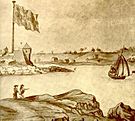New Hampshire
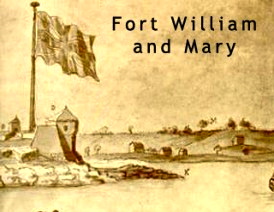
Meetinghouse, The Heart of Washington, New Hampshire
Here is a short preview of the new documentary about the Town Hall in Washington, New Hampshire. The 55 minute documentary, “Meetinghouse: The Heart of Washington, New Hamphshire” will have its premier on Saturday August 11, 2012 at the town’s celebration of the 225th year since construction. Join us there.
 Timeline of New Hampshire: 1600’s
Timeline of New Hampshire: 1600’s
- (1622) King James I granted region between Salem and Merrimac Rivers to John Mason, Sir Ferdinando; granted region between Merrimac and Kennebec Rivers to David Thomson
- (1623) Dover settlement founded
- (1629) John Mason received land grant and named the new settlement New Hampshire
- (1641) Massachusetts Colony gained control of New Hampshire settlements
- (1642) School Act of Massachusetts, required children to be taught reading, citizenship, religion
- (1645) First recorded slave in Portsmouth
- (1690) Warship, Falkland, constructed for British Navy in Portsmouth
- (1691) New Hampshire permanently separated from Massachusetts, becoming the Royal Province (colony) of New Hampshire.
1700’s
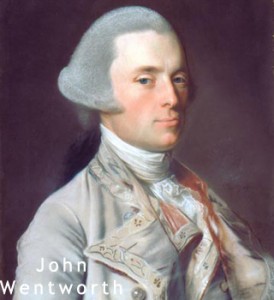 (1717) John Wentworth became New Hampshire’s lieutenant governor
(1717) John Wentworth became New Hampshire’s lieutenant governor- (1734) Religious revival, Great Awakening, swept through New Hampshire
- (1741) Bennington Wentworth became Colony Governor
- (1765) King George III’s Stamp Act went into effect
- (1774) New Hampshire first state to declare independence from England; Powder raid occurred
- (1776) Declaration of Independence read on state house steps; independent government established; state adopted revolutionary constitution
- (1778) New Hampshire first state to hold constitutional convention
- (1783) New Hampshire first state to require constitution be referred to people for approval
- (1788) U. S. Constitution ratified; New Hampshire became 9th U. S. state
1800’s
- (1808) State capitol established in Concord
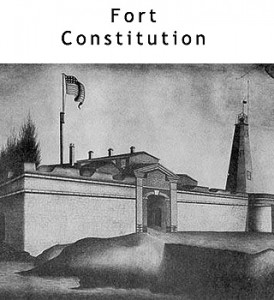 (1809) Explosion at Fort Constitution on Independence Day killed 14 people
(1809) Explosion at Fort Constitution on Independence Day killed 14 people- (1813) Devastating fire in Portsmouth
- (1819) Taxation for church purposes prohibited by religious toleration act
- (1833) First U. S. public library founded in Peterborough
- (1840) Webster-Ashburton Treaty determined official border between state and Canada
- (1853) Hillsboro native, Franklin Pierce, became 14th U. S. President
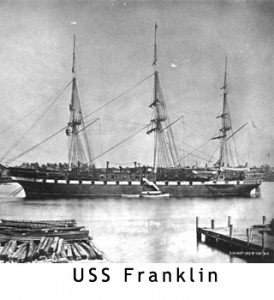 (1864) Largest wooden ship, USS Franklin, built in Portland
(1864) Largest wooden ship, USS Franklin, built in Portland- (1865) New Hampshire’s 18th Regiment led Union troops into Richmond, VA during Civil War
New Hampshire is a state of the United States of America located in the New England region in the Northeast. New Hampshire was one of the Thirteen Colonies that revolted against British rule in the American Revolution.
Founding: 17th century–1775
The colony that became the state of New Hampshire was founded on the division in 1629 of a land grant given seven years previously by the Council for New England to Captain John Mason and Sir Ferdinando Gorges (who founded Maine). The colony was named New Hampshire after the English county ofHampshire, one of the first Saxon shires. Hampshire was itself named after the port of Southampton, which was known previously as simply “Hampton”.
New Hampshire was first settled by Europeans at Odiorne’s Point in Rye (near Portsmouth) by a group of fishermen from England under David Thompson in 1623, just three years after the Pilgrims landed at Plymouth. The settlers built a fort, manor house and other buildings, some for fish processing, on Flake Hill. They called the settlement Pannaway Plantation. In 1623 the English explorer Christopher Levett, an associate of Gorges and a member of the Council for New England, wrote of visiting Thomson at his Pannaway Plantation. The first native New Hampshirite, John Thompson, was born there. (Note: this was the conclusion of several early historians. However, we now know that John Thompson was baptised at St. Andrew’s Parish in Plymouth, England in 1619. Most likely the first English child born in New Hampshire was Agnes Hilton, daughter of William Hilton, born at Dover in 1625.) New Hampshire was one of the original 13 colonies.
David Thompson had been sent by Mason, to be followed a few years later by Edward and William Hilton. They led an expedition to the vicinity of Dover, which they called Northam. Mason died in 1635 without ever seeing the colony he founded. Settlers from Pannaway, moving to the Portsmouth region later and combining with an expedition of the new Laconia Company (formed 1629) under Captain Neal, called their new settlement Strawbery Banke. In 1638 Exeter was founded by John Wheelwright.
In 1631, Captain Thomas Wiggin served as the first governor of the Upper Plantation (comprising modern-day Dover, Durham and Stratham). All the towns agreed to unite in 1639, but meanwhile Massachusetts had claimed the territory. In 1641 an agreement was reached with Massachusetts to come under its jurisdiction. Home rule of the towns was allowed. In 1653 Strawbery Banke petitioned the General Court of Massachusetts to change its name to Portsmouth, which was granted.
The relationship between Massachusetts and the independent New Hampshirites was controversial and tenuous, and complicated by land claims maintained by the heirs of John Mason. In 1679 King Charles II separated New Hampshire from Massachusetts, issuing a charter for the royal Province of New Hampshire, with John Cutt as governor. New Hampshire was absorbed into the Dominion of New England in 1686, which collapsed in 1689. After a brief period without formal government (the settlements were de facto ruled by Massachusetts) William and Mary issued a new provincial charter in 1691. From 1699 to 1741 the governors of Massachusetts were also commissioned as governors of New Hampshire. Father Rale’s War between the colonists and the Wabanaki Confederacy was also conducted throughout New Hampshire. In 1741 New Hampshire returned to its royal provincial status with a governor of its own, Benning Wentworth, who was its governor from 1741 to 1766.
Revolution: 1775–1815
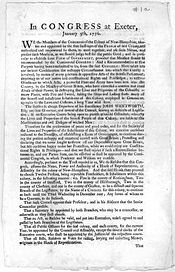 Broadside statement of Congress of the Colony of New Hampshire, referencing “sudden & abrupt departure” of Royal Governor John Wentworth, January 1776
Broadside statement of Congress of the Colony of New Hampshire, referencing “sudden & abrupt departure” of Royal Governor John Wentworth, January 1776
New Hampshire was one of the Thirteen Colonies that revolted with the British rule in the American Revolution. In January 1776, it became the first colony to set up an independent government and the first to establish a constitution, but the latter explicitly stated “we never sought to throw off our dependence on Great Britain”, meaning that it was not the first to actually declare its independence (that honor instead belongs to Rhode Island). The historic attack on Fort William and Mary (now Fort Constitution) helped supply the cannon and ammunition for the Continental Army that was needed for the Battle of Bunker Hill that took place north of Boston a few months later. New Hampshire raised three regiments for the Continental Army, the 1st, 2nd and 3rd New Hampshire regiments. New Hampshire Militia units were called up to fight at the Battle of Bunker Hill, Battle of Bennington, Saratoga Campaign and the Battle of Rhode Island. John Paul Jones‘ ship the Sloop-of-war USS Ranger and the frigate USS Raleigh were built in Portsmouth, New Hampshire, along with other naval ships for the Continental Navy and privateers to hunt down British merchant shipping.
On January 5, 1776, the Congress of New Hampshire, meeting in Exeter, ratified the first state constitution in the soon-to-be United States, six months before the signing of the Declaration of Independence.
Concord was named the state capital in 1808.
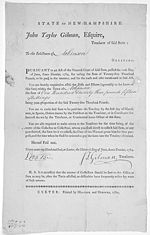 Order by John Taylor Gilman, State Treasurer and later Governor, 1784
Order by John Taylor Gilman, State Treasurer and later Governor, 1784
Industrialization, abolitionism and politics: 1815–1860
In the 1830’s, New Hampshire saw a major news story: the founding of the Republic of Indian Stream on its northern border with Canada over the unresolved post-revolutionary war border issue.
Abolitionists from Dartmouth College founded the experimental, interracial Noyes Academy in Canaan, New Hampshire in 1835. Rural opponents of the school eventually dragged the school away with oxen before lighting it ablaze to protest integrated education, within months of the school’s founding.
Abolitionist sentiment was a strong undercurrent in the state, with significant support given the Free Soil Party of John P. Hale. However the conservative Jacksonian Democrats usually maintained control, under the leadership of editor Isaac Hill. In 1856 the new Republican Party headed by Amos Tuck produced a political revolution.
During the Civil War, New Hampshire provided 18 infantry regiments, two cavalry regiments, three artillery companies, and three sharpshooter companies. The 5th Infantry became one of the most celebrated units in the war, losing 477 men total of the 1051 who were mustered into service in October 1861.
Prosperity, depression and war: 1920–1950
1922 map of New Hampshire published in the bulletin of the Brown Company in Berlin
The textile industry was hit hard by the depression and growing competition from southern mills. The closing of the Amoskeag Mills in 1935 was a major blow to Manchester, as was the closing of the former Nashua Manufacturing Company mill in Nashua in 1949 and the bankruptcy of the Brown Company paper mill in Berlin in the 1940s, which led to new ownership.
Modern New Hampshire: 1950–present
The post-World War II decades have seen New Hampshire increase its economic and cultural links with the greater Boston, Massachusetts, region. This reflects a national trend, in which improved highway networks have helped metropolitan areas expand into formerly rural areas or small nearby cities.
The replacement of the Nashua textile mill with defense electronics contractor Sanders Associates in 1952 and the arrival of minicomputer giant Digital Equipment Corporation in the early 1970s helped lead the way toward southern New Hampshire’s role as a high-tech adjunct of the Route 128 corridor.
The postwar years saw the rise of New Hampshire’s political primary for President of the United States, which as the first primary in the quadrennial campaign season draws enormous attention.

